Veljko Boljanovic
Machine Learning Prediction for Phase-less Millimeter-Wave Beam Tracking
Jun 06, 2022
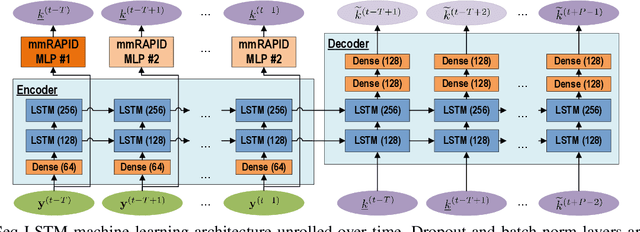
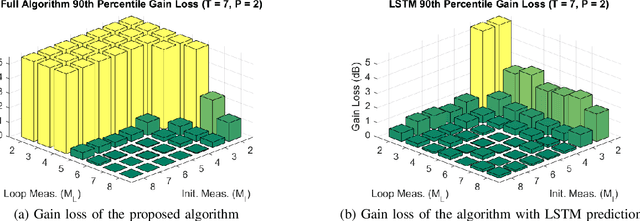
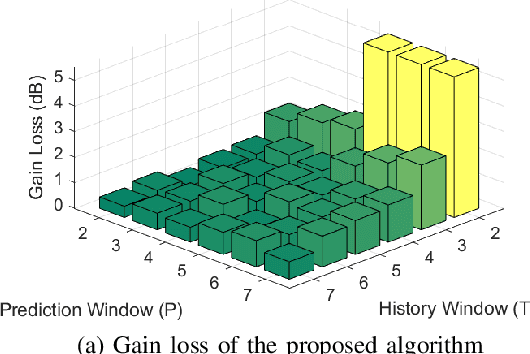
Abstract:Future wireless networks may operate at millimeter-wave (mmW) and sub-terahertz (sub-THz) frequencies to enable high data rate requirements. While large antenna arrays are critical for reliable communications at mmW and sub-THz bands, these antenna arrays would also mandate efficient and scalable initial beam alignment and link maintenance algorithms for mobile devices. Low-power phased-array architectures and phase-less power measurements due to high frequency oscillator phase noise pose additional challenges for practical beam tracking algorithms. Traditional beam tracking protocols require exhaustive sweeps of all possible beam directions and scale poorly with high mobility and large arrays. Compressive sensing and machine learning designs have been proposed to improve measurement scaling with array size but commonly degrade under hardware impairments or require raw samples respectively. In this work, we introduce a novel long short-term memory (LSTM) network assisted beam tracking and prediction algorithm utilizing only phase-less measurements from fixed compressive codebooks. We demonstrate comparable beam alignment accuracy to state-of-the-art phase-less beam alignment algorithms, while reducing the average number of required measurements over time.
Multi-Mode Spatial Signal Processor with Rainbow-like Fast Beam Training and Wideband Communications using True-Time-Delay Arrays
Jan 08, 2022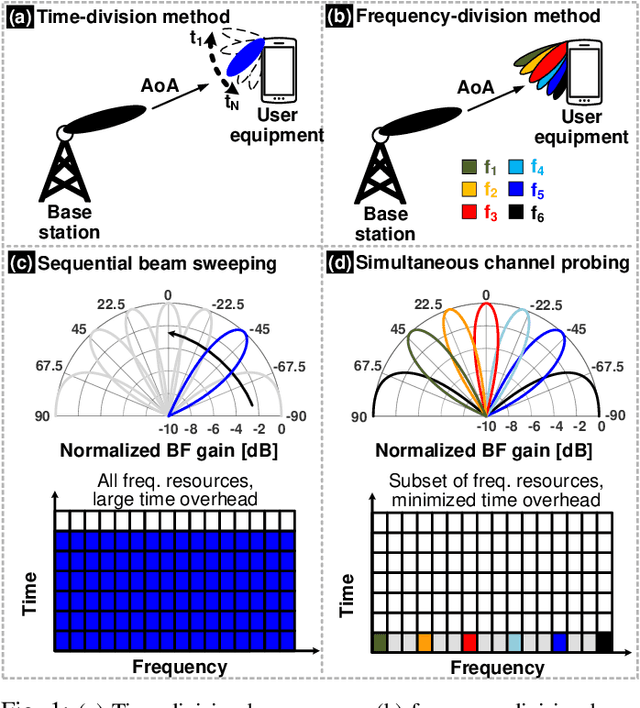
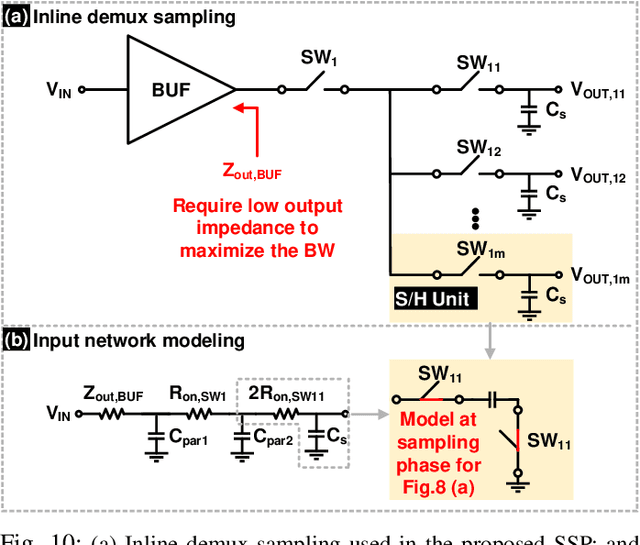
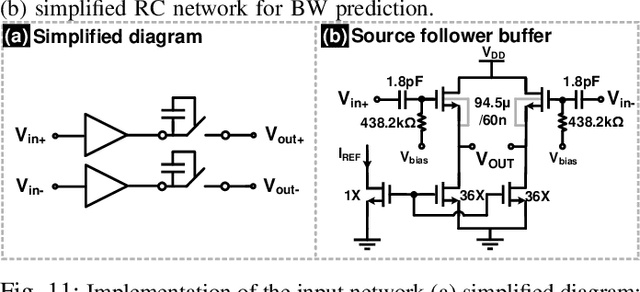

Abstract:Initial access in millimeter-wave (mmW) wireless is critical toward successful realization of the fifth-generation (5G) wireless networks and beyond. Limited bandwidth in existing standards and use of phase-shifters in analog/hybrid phased-antenna arrays (PAA) are not suited for these emerging standards demanding low-latency direction finding. This work proposes a reconfigurable true-time-delay (TTD) based spatial signal processor (SSP) with frequency-division beam training methodology and wideband beam-squint less data communications. Discrete-time delay compensated clocking technique is used to support 800~MHz bandwidth with a large unity-gain bandwidth ring-amplifier (RAMP)-based signal combiner. To extensively characterize the proposed SSP across different SSP modes and frequency-angle pairs, an automated testbed is developed using computer-vision techniques that significantly speeds up the testing progress and minimize possible human errors. Using seven levels of time-interleaving for each of the 4 antenna elements, the TTD SSP has a delay range of 3.8 ns over 800 MHz and achieves unique frequency-to-angle mapping in the beamtraining mode with nearly 12 dB frequency-independent gain in the beamforming mode. The SSP is prototyped in 65nm CMOS with an area of 1.98mm$^2$ consuming only 29 mW excluding buffers. Further, an error vector magnitude (EVM) of 9.8% is realized for 16-QAM modulation at a speed of 122.8 Mb/s.
Wideband Beamforming with Rainbow Beam Training using Reconfigurable True-Time-Delay Arrays for Millimeter-Wave Wireless
Nov 30, 2021
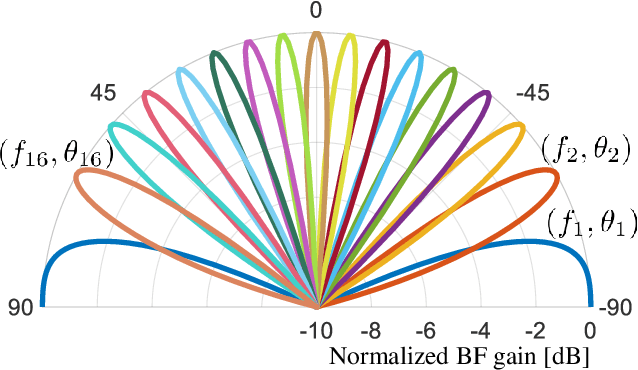


Abstract:The decadal research in integrated true-time-delay arrays have seen organic growth enabling realization of wideband beamformers for large arrays with wide aperture widths. This article introduces highly reconfigurable delay elements implementable at analog or digital baseband that enables multiple SSP functions including wideband beamforming, wideband interference cancellation, and fast beam training. Details of the beam-training algorithm, system design considerations, system architecture and circuits with large delay range-to-resolution ratios are presented leveraging integrated delay compensation techniques. The article lays out the framework for true-time-delay based arrays in next-generation network infrastructure supporting 3D beam training in planar arrays, low latency massive multiple access, and emerging wireless communications standards.
A 4-Element 800MHz-BW 29mW True-Time-Delay Spatial Signal Processor Enabling Fast Beam-Training with Data Communications
Jun 02, 2021



Abstract:Spatial signal processors (SSP) for emerging millimeter-wave wireless networks are critically dependent on link discovery. To avoid loss in communication, mobile devices need to locate narrow directional beams with millisecond latency. In this work, we demonstrate a true-time-delay (TTD) array with digitally reconfigurable delay elements enabling both fast beam-training at the receiver with wideband data communications. In beam-training mode, large delay-bandwidth products are implemented to accelerate beam training using frequency-dependent probing beams. In data communications mode, precise beam alignment is achieved to mitigate spatial effects during beam-forming for wideband signals. The 4-element switched-capacitor based time-interleaved array uses a compact closed-loop integrator for signal combining with the delay compensation implemented in the clock domain to achieve high precision and large delay range. Prototyped in TSMC 65nm CMOS, the TTD SSP successfully demonstrates unique frequency-to-angle mapping with 3.8ns maximum delay and 800MHz bandwidth in the beam-training mode. In the data communications mode, nearly 12dB uniform beamforming gain is achieved from 80MHz to 800MHz. The TTD SSP consumes 29mW at 1V supply achieving 122MB/s with 16-QAM at 9.8% EVM.
 Add to Chrome
Add to Chrome Add to Firefox
Add to Firefox Add to Edge
Add to Edge